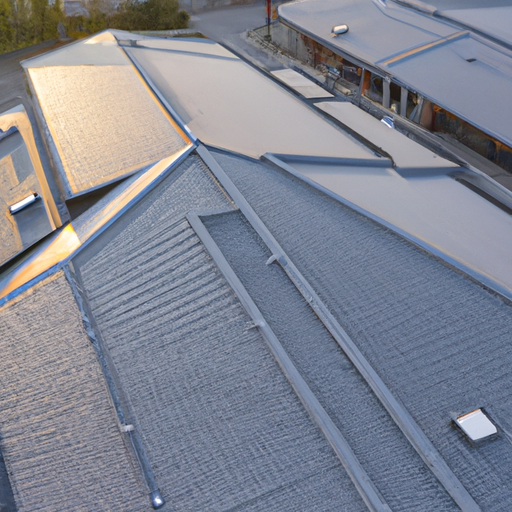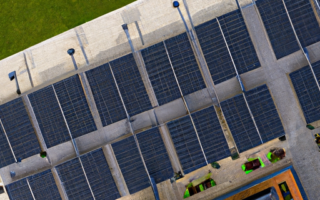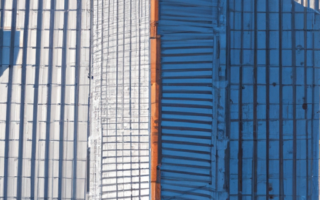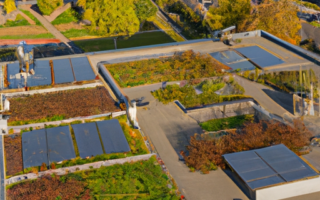Innovations in Roof Construction: Advancements Revolutionizing the Industry
When it comes to roof construction, there have been numerous advancements and innovations that are revolutionizing the industry. These innovations not only enhance the durability and longevity of roofs but also improve their energy efficiency and aesthetic appeal. In this article, we will explore some of the groundbreaking techniques that are transforming the way roofs are constructed.
One of the most notable innovations in roof construction is the use of green roofing systems. Green roofs are designed to be covered with vegetation, which provides numerous benefits. Not only do these roofs help reduce the urban heat island effect, but they also improve air quality by absorbing pollutants and carbon dioxide. Additionally, green roofs can increase energy efficiency by providing insulation and reducing the need for artificial cooling and heating.
Another exciting advancement in roof construction is the use of solar panels. As the demand for renewable energy sources continues to grow, integrating solar panels into roofs has become a popular choice. Solar panels not only generate electricity but also contribute to reducing carbon emissions. In addition, advancements in solar panel technology have made them more efficient and aesthetically pleasing, allowing them to seamlessly blend with the overall roof design.
In recent years, there has also been a significant emphasis on using sustainable and eco-friendly roofing materials. Traditional roofing materials, such as asphalt shingles, can have a detrimental impact on the environment. However, alternatives like metal roofing, reclaimed tiles, and recycled shingles are gaining popularity due to their reduced environmental footprint. These materials are not only durable but also offer excellent insulation properties, helping homeowners save on energy costs.
Advancements in roofing technology have also led to the development of innovative installation methods. For instance, the use of drones for roof inspections has become increasingly prevalent. Drones equipped with high-resolution cameras can quickly and accurately assess the condition of a roof, identifying any potential issues. This technology not only saves time but also improves safety, as it reduces the need for manual inspections that can be risky for workers.
Furthermore, the use of prefabricated roof trusses and panels has streamlined the construction process. These prefabricated components are manufactured off-site and then brought to the construction site for easy installation. This not only reduces labor costs but also ensures precise construction, leading to stronger and more reliable roofs.
In conclusion, advancements in roof construction techniques are transforming the industry. From the implementation of green roofing systems and solar panels to the use of sustainable materials and innovative installation methods, these innovations are enhancing both the functionality and environmental impact of roofs. As technology continues to evolve, we can expect further advancements that will revolutionize the way roofs are constructed in the future.
Best Practices in Roof Construction: A Comprehensive Guide to Optimal Construction Techniques
In the field of roof construction, following best practices is crucial to ensure the durability, functionality, and aesthetic appeal of the roof. Implementing optimal construction techniques can help minimize potential issues and maximize the overall quality of the roof. This comprehensive guide highlights some of the best practices in roof construction that professionals should consider.
1. Proper Roof Design and Planning
Before starting any construction work, it’s essential to have a well-thought-out roof design and a detailed plan. This involves considering factors such as the climate, building codes, intended use of the structure, and the specific requirements of the roofing material being used.
2. Adequate Structural Support
Ensuring that the roof has adequate structural support is crucial for its long-term performance. This includes using proper framing techniques, selecting appropriate load-bearing materials, and following engineering specifications. Poor structural support can lead to sagging, leaks, and even structural failure.
3. Quality Roofing Materials
Choosing high-quality materials is key to a successful roof construction project. From shingles to underlayment, using durable and weather-resistant materials can significantly extend the lifespan of the roof. Additionally, using materials that are compatible with the climate and conditions of the area is essential for optimal performance.
4. Attention to Installation Techniques
The proper installation of roofing materials is just as important as the quality of the materials themselves. Following manufacturer instructions and recommended installation techniques is crucial for ensuring the effectiveness of the roof’s protective barriers against water, wind, and other elements. This includes proper fastening, sealing, and flashing techniques.
5. Effective Ventilation Systems
Proper ventilation is vital for the health of the roof and the entire structure. A well-designed ventilation system helps prevent moisture buildup, which can lead to mold, rot, and other problems. It also helps regulate temperature, reducing energy costs and maintaining a comfortable indoor environment.
6. Regular Inspections and Maintenance
Maintaining the roof involves regular inspections and necessary repairs. Routine inspections can help identify potential issues early on, preventing them from escalating into major problems. Prompt maintenance, such as replacing damaged shingles or fixing leaks, ensures that the roof remains in optimal condition.
7. Compliance with Safety Standards
Adhering to safety standards and regulations is essential in roof construction. This includes following proper safety protocols, providing necessary personal protective equipment, and implementing fall protection measures. Compliance with safety standards not only protects workers but also contributes to the overall quality of the construction process.
By implementing these best practices in roof construction, professionals can ensure that the roofs they build are structurally sound, long-lasting, and capable of withstanding various environmental factors. Whether it’s a residential, commercial, or industrial project, following optimal construction techniques is vital for delivering high-quality roofs that meet or exceed client expectations.



